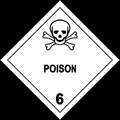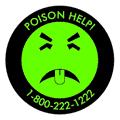 Toxic Plants to Animals and Humans
Toxic Plants to Animals and Humans
Live Smart  | home
| home
Customer Service
Disclosure & Policy
1(888)875-3582
orders, questions, fax
9:00am - 5:00pm CST
|
 Email Invoicing with Paypal,
No Paypal account required
credit card by phone
|
What is Popular?
Herbal Adjustment Joint Pain
BPW and BCW
Blood and Organ Cleansing
CCE-W Bowel cleanse
|
High Quality
Thyroid Balancing
Bulk and
single jars
|
Supplements
Spiritual
Health
Pet Corner
Living Green
|
Be Your Own Tea Master
learn how
Pure Herbs
|
Organ
Cleansing
|
Safe Cold Remedies
Articles
and more
|
 Herbal Remedies
Instruction & Articles
Homeopathics
dogs,cats &
equine
|
 Young Living
Ancient Biblical Oils
|
 Store
Front
|
 |
www.blueirissanctuary.com 888-875-3582 Nutritional Consulting ~ Master Herbalist available
Below is a comprehensive list of plants that are categorized by mild, non and very toxic plants especially to our pets and in most cases to people.
It should be noted that raisons and chocolate are VERY toxic to pets. Even though you might have gotten away with a small amount it is not wise to give them these in any form. They shut down their kidney's and you should take your pet immediately to the vet to have them induce vomiting, they will also have you give them a charcoal slurry in an oral syringe . It is good to keep charcoal capsules around for humans and pets to give to absorb toxic material. Give your pet parsley, which is loaded with chlorophyl as well.
DO NOT give your pets kelp, as it has iodine in it and may effect their thyroid too much. Only administer this if on the advice of your Vet. When my dog feels bad she will eat the parsley, as they do when they eat grass. Eating grass is dangerous if it has been sprayed with chemicals. Fluoride in water is bad for their kidneys as well as yours and your should filter which will also remove the chlorine as well. Both of these are bad for our bodies and our pets. We offer a great shower filter for those whom are interested. You absorb an enormous amount through your largest organ, you skin.
Always keep Poison control and Hennepin Regional Poison Center
numbers handy in case of emergency!
 Mr. Yuk says keep your local poison control number handy as well as the
listed national phone number 1-800-222-1222.
Always have your emergency room selected and previewed so if in case of
any emergency you know where to go and what their capacity is to help you in
case of an emergency. Not all emergency rooms are equal.
Some are equiped to handle only certain types of health emergencies.
Also know where your doctor of choice may have clinical privileges.
|
Mildly Toxic:
The following plants may be mildly toxic or may easily be confused with toxic plants. However, since they are only mildly poisonous, they can be kept around children with some precautions. We recommend calling the Hennepin Regional Poison Center if a child or animal consumes a portion of any of the following:
|
|
AloeVera (animal)
Alyssum
American Ivy
Angel's Wings
Apricot (pit)
Arboricola
Arrowhead
Asparagus Fern
Avocado (seed, i
Birch Tree
Black Walnut
Bleeding Heart
Boston Ivy
Burro Tail
Cactus
Calla Lily
Carnation
Carrot (greens)
Cattail
Century Plant
Chenille Plant
Cherries (pits)
Chrysanthemum
Clivia
Corn Plant
Daisy
Devil's Ivy
Dieffenbachia
Dogwood
Donkey Tail
Dracaena (most varieties)
Dragon Tree
Elephant's Ear
Engelman Ivy
Evergreen Plant
Fatsia
Feiii
Ficus Benjamins
Fig Tree "
Five Leaved Ivy
Geranium
Gladiola
Hen & Chickens
Honeysuclke
|
Inch Plant
Iris
Ivy
Lady Slipper
Lamb's Tail
Maple Tree
Mexican Snowball
Mother-in-law Plant
Mother-in-law Tongue
Narcissus
Nephthytis
Oak Tree
Orchid
Oxalis
Painted Lady
Pansy
Peace Lily
Peach (pit)
Philodendron
Plush Plant
Foinsettia
Polka Dot Cactus
Potato (all green parts)
Pothos
Rhubarb (leaves)
Ribbon Plant
Rose
Rubber Plant
Sansevieria
Sedum
Sensitive Fem
Shamrock Plant
Snake Plant
Spathe Flower
Spathlphyllum
Sweet Pea
Tomato (entire plant except the ripe fruit)
Tulip
Umbrella Plant
Violet
Virginia Creeper
Weeping Fig
Weeping Willow
Woodbine
|
Nontoxic:
The following plants are considered to be nontoxic.
However, any plant may cause unexpected reactions in certain individuals, including choking. Always check withthe Hennepin Regional Poison Center if a plant has been ingested.
|
Abelia
|
Emerald Ripple
|
Pregnant Plant
|
African Daisy
|
Eugenia
|
PropellerPlant
|
African Violet
|
False Solomon's Seal
|
Purple Passion
|
Aglaonema
|
Feltbush Plant
|
Pyrocantha
|
Airplane Plant
|
Fittonia
|
Queen's Tears
|
Alpine Current
|
Forsythia
|
Rabbit's Foot
|
Aluminum Plant
|
Friendship Plant
|
Rainbow Plant
|
Anthericum
|
Fuchsia
|
Rosary Vine
|
Anthurium
|
Gardenia
|
Rubber Plant
|
Aralia
|
Gloxinia
|
Salvia
|
Araucaria
|
Golddust Plant
|
|
Areca Palm
|
Goldfish Plant .
|
Screwpine
|
Ash Tree
|
Grape Ivy
|
Seersucker Plant
|
Aspidistra
|
Hawaiian Ti Plant
|
Sensitive Plant
|
Hibiscus
|
Silk Tree
|
|
Baby's Breath
|
Honey Locust
|
Silver Dollar Plant
|
Baby's Tears
|
Hosta
|
Silver Evergreen
|
Baby's Toes
|
Hoya
|
Silver Poplar
|
Bachelor Buttons
|
Impatiens
|
Sinningia
|
Basket Vine
|
Jacob's Ladder
|
Snapdragon
|
Begonia
|
Jade Plant
|
Spider Plant
|
Birdsnest Fem
|
Japanese Aralia
|
Spirea
|
Bleeding Heart Vine
|
Japanese Lantern
|
Staghom Fem
|
Blood Leaf Plant
|
Staghom Sumac
|
|
Bonsai
|
Kentia Palm
|
Starfish Flower
|
Boston Fem
|
Lilac
|
String of Buttons
|
Bougainvillea
|
Lindea Tree
|
Striped Inch Plant
|
Bromelia
|
Lipstick Plant
|
Sweat Plant
|
Bromeliad
|
Maidenhair Fem
|
Swedish Ivy
|
Butterfly Orchid
|
Magnolia Bush
|
Sword Fern
|
Button Fem
|
Marigold (except Marsh Marigold)
|
Teddy Bear Plant
|
Calathea Argyraea
|
Umbrella Tree
|
|
Calico Hearts
|
Maternity Plant
|
Velvet Plant
|
Calla Lily Begonia
|
Mock Orange
|
Venus Fly Trap
|
Camellia
|
Mountain Ash
|
Viburnum
|
Carrion Flower
|
Natal Plum
|
Vriesea
|
Cattleya
|
Neanthe Bella
|
Wandering Jew
|
China Doll
|
Nerve Plant
|
Wax Plant
|
Chinese Evergreen
|
Norfolk Island Pine
|
|
Christmas Cactus
|
Palm
|
Yucca
|
Christmas Evergreen
|
Panda Plant
|
Zebra Basket Vine
|
Coelogyne
|
Passion Vine
|
Zebra Plant
|
Peacock Fem
|
Zinnia, Creeping
|
|
Columbine
|
Peacock Plant
|
|
Cordyline
|
Pepperomia
|
|
Corn
|
Petunia
|
|
Creeping Charlie
|
Phlox
|
|
(house plant)
|
Piggyback Plant
|
|
Crocus (spring
blooming only)
|
Pilea
|
|
Pine Tree
|
||
(Codiaeum sp.)
|
Plush Plant
|
|
Dahlia
|
Polka Dot Plant
|
|
Dandelion
|
Potentilla
|
|
Powder Puff
|
||
Elm Tree
|
Prayer Plant
|
Toxic:
The following plants are considered toxic.
If any portion of the following plants is ingested,
call the Hennepin Regional Poison Center immediately.
 **I recently (2/2013) found articles on some of the listed poisonous plants so I included the
descriptions on these particular plants discussed and have given the author with his link
Read about cocoa mulch toxicity click here
|
|
'
|
|
Alder Buckthorn
|
Lily of the Valley
|
Amaryllis
|
Lobelia
|
Anemone
|
Loco Weed
|
Angel's Trumpet Tree Arborvitae
ANGEL’S TRUMPETS, DEVIL'S BREATH, AND THE ZOMBIE’S CUCUMBER
The genii Brugmansia and Datura are very closely related and remarkably similar; they are both shrubs or bushes with elegant, trumpet-like flowers common all around South America. Oh, and they also might erase your memories and destroy your free will, reducing you to a helpless flesh-slave in thrall to a voodoo priest or a ruthless drug lord. These flowering plants contain large amounts of the alkaloid scopolamine, known to some as “truth serum” by Tom Currie
|
Maiden Hair tree
|
Azalea
|
Marigold (Marsh Marigold only)
|
Baneberry
|
Marijuana
|
 |
THE MANCHINEEL TREE: “THE LITTLE APPLES OF DEATH”
“Manchineel” is an Anglicization of the Spanish “manzanilla” or “little apple,” based on the resemblance between Manchineel fruits and unripe apples. The apple connection ends there, however, as no matter how sour or tart a particular apple species might be, they won’t cause you to suffer severe gastroenteritis, intestinal bleeding, or respiratory edema—not even a Granny Smith will hurt you that bad. Hippomane mancinella is one of the most
poisonous trees in the world, to the point that if you stand underneath a Manchineel tree during a rainstorm you’re likely to develop severe skin blisters just from the diluted sap running off the branches. Native Caribbeans tipped their arrows and spears with Manchineel sap to ensure painful death from even slight wounds, and their preferred method of execution was to tie victims to the trunk of the tree, ensuring a slow and horrifically painful death over a period of days. So yeah, don’t mistake these for apple trees, ever.
by Tom Currie
|
Barberry
|
May Apple
|
Bird of Paradise
|
Milkweed
|
Bittersweet
|
Mistletoe
|
Black Locust
|
Moonseed
|
Black Root
|
Monkshood
|
Buckeye
|
Morning Glory
|
Buckthorn
|
Mountain Laurel
|
Buttercups
|
Mushrooms
toxic ‘shrooms from tasty ones, i.e. “brightly colored” mushrooms are supposedly a warning sign but Amanita “destroying angel” mushrooms are all a bland shade of white, and while many believe that any mushroom an animal is observed eating must be safe, many woodland creatures have developed immunities to fungal toxins that are dangerous to humans. Even experienced mushroom pickers can get tripped up from time to time, so maybe when you want to add a truly unique home-made flavor to your salads, just make your own croutons instead of adding an ingredient that will at worst kill you and at least make you spend the next few hours on the toilet by Tom Currie
|
Caladium
|
Nightshade (all varieties)
|
Calico Bush
|
Oleander (Nerium) highly poisonous
|
California Holly
|
Paradise Plant
|
California Ivy
|
Parsnip
Partridge Breast
|
Castor Bean
9 of 10 CASTOR BEAN PLANTS: THE KGB’S VEGETABLE GARDEN
Castor bean plants are handsome and popular flowering plants that can be found in many modern gardens and incidentally contain one of the deadliest weaponized poisons known to man. The castor “bean” (actually a seed—the first layer of deadly deceit and intrigue that characterizes this lethal plant) contains a useful concentration of ricin, an extremely toxic but subtle poison that inhibits protein synthesis, allowing its victims to continue functioning normally for hours or even days before the first symptoms make their appearance
|
 |
CERBERA ODOLLAM: THE SUICIDE TREE
Most of the plants on this list have a common name that only just hints at how it might be dangerous, but the popular nickname of Cerbera odollam—the “Suicide Tree”—is refreshingly honest about how it only exists to kill you. Native to Southern Asia in general and the Kerala province of India in particular, Cerbera odollam contains a powerful cardiac toxin
|
 |
Chinese Lantern
|
Peony
|
Christmas Rose
|
Periwinkle
|
Clematis
|
Peyote
|
Cotloneaster
|
Poison Ash
|
Creeping Charlie
|
Poison Daisy
|
Crocus (except spring
blooming)
|
Poison Hemlock
|
Coleus
|
Poison Ivy
|
Croton (except Codiaeum sp.)
|
Poison Milkweed
|
Crown of Thorns
|
Poison Nut
|
Crown Vetch
|
Poison Oak
|
Cyclamen
|
Pokewood
|
Daphne
|
Poppy (except California)
|
Delphinium
|
Primrose
|
Dutchman's Pipe
|
Ranunculus
|
Elderberry
|
Rhododendron
|
English ivy
|
Rosary Beans
|
Eucalyptus
|
Rosary Peas
|
Euonymus
|
Sand Begonia
|
Fluffy Ruffles
|
Scindapus
|
Four O'Clock
|
Snake Palm
|
Fox Glove
|
Snow on the Mountain
|
Gladiola
|
Solomon's Seal
|
GYMPIE GYMPIE: THE TREE OF PAIN
Informed visitors to Australia are well aware that every animal on the continent is ready, willing and able to kill you. From the tiny Irukandji jellyfish to the famously muscular kangaroo, all the way up to actual Australian people who are all descendants from convicts, you have to be careful. With all the animal life on Australia being terrifyingly deadly, it’s easy to forget that Australia is home to the most virulent and painful species of stinging tree. Dendrocnide moroides (AKA “gympie gympie” or “moonlighter”) is covered with tiny silica stingers that are almost impossible to remove from the flesh, all of which contain a powerful neurotoxin easily capable of killing dogs and horses and causing excruciating pain to humans. There’s at least one story (backed up by scientific and medical reports) that tells of an unlucky Australian soldier who used a gympie-gympie leaf as toilet paper and then, unable to tolerate the pain, blew out his brains with his service revolver. So yeah, when you’re in Australia, watch your fanny, figuratively and literally
|
 |
Hawaiian Baby Wood Rote
|
Star of Bethlehem
Scheffelera
|
Hedge Apples
|
String of Beads
|
Hogwort
|
Stinkweed
|
Holly
|
Sumac
|
Hyacinth
|
Toadstools
|
Hydrangea
|
Tobacco
|
Jack in the Pulpit
|
Trumpet Plant
|
Jequirity Bean
|
Victoria Regia
|
Jerusalem Cherry
|
Vinca (all varieties)
|
Jimson Weed
|
Water Hemlock
|
 |
White Snake Root (Eupatorium rugosa) ( I did not know this!!)killed more than half of the citizens of Dubois County, Indiana, where Abraham Lincoln spent his boyhood years. Snakeroot entered humans in a particularly sneaky way—cows grazing on the plant suffered few noticeable effects, but humans who drank those cows’ milk (including Abe’s mother, Nancy Hanks Lincoln) soon suffered muscle pain, gastrointestinal distress, and
eventually a fatal coma by Tom Currie
|
Jonquil
|
Wild Parsnip
|
Juniper
|
Wisteria
|
Lantana
|
Yew
|
Larkspur
|
Wild Onion
|
Laurel
Kalarchoe
______________________________________________
|
|
Brought to you by Blue Iris Sanctuary www.blueirissanctuary.com 888-875-3582
Offering you Solutions for Living
contact: adelle@blueirissanctuary.com
None of what is recommend in this site is to be in leu of proper medical help. We do not treat disease in any way. We are here to
educate you and give you information on the alternative processes available to you so that you can make informed decisions and
take charge of your own health issues. We do not accept any liability for the advise and products we offer. We are required to
advise you that none of the information or products offered on this site is accepted by the AMA nor the FDA.
Please be advised and always seek professional medical advise when undertaking any suggestions in this site.
Vaccine Reactions in Cats and Food recipes for good health | TOXIC TO DOGS AND CATS BEWARE OF COCOA MULCH | Hair Loss in Cats | Toxic Plants List - For Animals and Humans | Interceptor Heart Worm Med Dangerous | Flea treatments for pets and home
©2013 Blue Iris Sanctuary All Rights Reserved.
This Web site contains copyrighted material,
trademarks, sale of, create derivative works of, on in any way exploit, in whole or in part, any
material is strictly prohibited. All photo's are owned by Blue Iris Sanctuary






